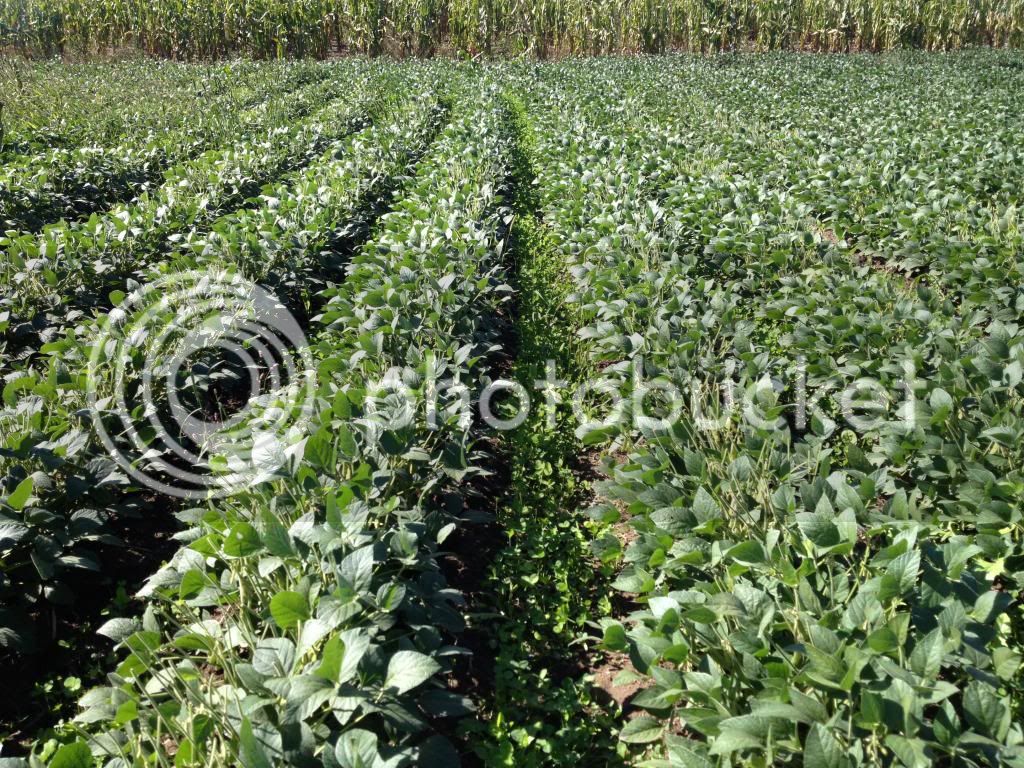Riggsgwp->
5 year old buck +
I use a 4 row planter with 36" rows and I broadcast clover at first spray which would be 3-4 weeks later (mid-late June). I only fertilize my crop rows. Clover gets packed with 4 wheeler during spray. I have had better luck with late planted soybeans and clover. I haven't noticed any negative impact on yield from the clover as it takes a while for the clover to establish.This is an old pic but it shows the result I try and achieve.


Last edited:
